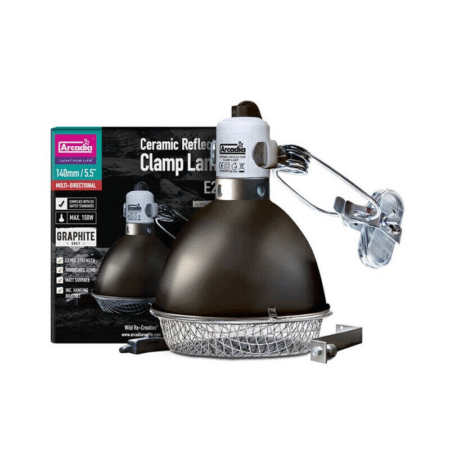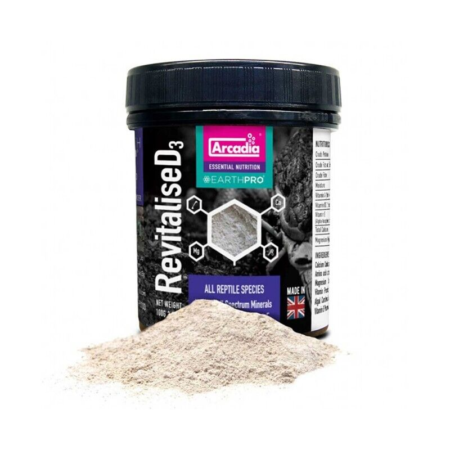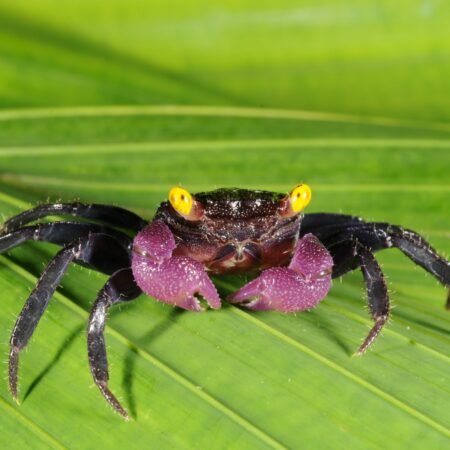RED LIZARD WHIPTAIL CATFISH 5-7CM PLECO LIVE TROPICAL FISH TANK ALGAE EATER, Perfect Algae Eater for Community Tanks, Thriving in Peaceful Aquatic Environments, Enhance Your Aquarium’s Beauty
£18.49 Original price was: £18.49.£15.48Current price is: £15.48.
Welcome these beautiful Red Lizard Whiptail Catfish into your tropical fish tank. These elegant algae eaters enhance your aquarium’s beauty while thriving in peaceful environments. Perfect for aquarists seeking vibrant community members and effective algae control.
999 in stock
Species Introduction
The Red Lizard Whiptail Catfish, scientifically known as Corydoras paleatus, is a captivating freshwater fish belonging to the Callichthyidae family. This species is native to the slow-moving rivers and streams of South America, particularly in regions like Brazil and Argentina. In its natural habitat, the Red Lizard Whiptail thrives in soft, slightly acidic waters, often found among submerged vegetation and sandy substrates. With its unique elongated body and distinctive coloration, which includes a blend of earthy tones and striking patterns, this fish not only serves as an efficient algae eater but also adds a beautiful aesthetic to any community tank. The Red Lizard Whiptail Catfish is a peaceful species, making it an ideal choice for aquarists looking to create a harmonious aquatic environment.
Essential Care Guide for Your Red Lizard Whiptail Catfish
| Optimal Living Conditions | |
|---|---|
| Water Temperature | 22-28°C (72-82°F) |
| pH Level | 6.0-7.5 |
| Water Hardness | 2-15 dKH |
| Minimum Tank Size | 120L (30 gal) |
| Salinity | Freshwater |
| Care Level | Beginner to Intermediate |
✓ Care Level: Easy
Tank Size: Minimum 75 liters (20 gallons)
Water Temperature: 22-28°C (72-82°F)
pH Level: 6.0-7.5
Hardness: 5-15 dGH
Natural Behavior & Temperament
The Red Lizard Whiptail Catfish exhibits a calm and gentle demeanor, making it a delightful addition to community tanks. These fish are known for their unique swimming patterns; they often glide gracefully along the substrate, using their barbels to forage for food. Their social nature means they thrive in groups, so it is recommended to welcome these beautiful creatures in schools of at least five individuals. This schooling behavior not only enhances their natural beauty but also reduces stress levels, allowing them to exhibit their full range of colors and patterns. In a peaceful aquatic environment, these fish will interact positively with their tank mates, creating a lively and dynamic display. Observing their interactions can provide insight into their social hierarchy, as they establish territories while remaining non-aggressive towards other species.
Tank Setup Guide
Setting up a suitable environment for your Red Lizard Whiptail Catfish is crucial for their health and well-being. An ideal tank setup should include a minimum of 75 liters (20 gallons) of water, providing ample space for swimming and foraging. The substrate should be soft and sandy, allowing these fish to burrow and explore without injury. Incorporating live plants, driftwood, and hiding spots will not only enhance the aesthetic appeal of the tank but also create a natural habitat that mimics their native environment. Plants such as Java Fern and Anubias are excellent choices, as they thrive in a variety of water conditions and provide cover for the fish. Additionally, ensure that the tank has adequate filtration to maintain water quality, as these fish are sensitive to poor water conditions.
Water Quality Management
✓ Good Water Quality is Essential
Maintaining optimal water quality is vital for the health of your Red Lizard Whiptail Catfish. The ideal water temperature should range between 22-28°C (72-82°F), with a pH level between 6.0 and 7.5. Regular water changes of 20-30% every two weeks will help to keep the water clean and free of harmful toxins. It is also important to monitor the hardness of the water, which should be maintained between 5-15 dGH. Utilizing a high-quality water testing kit will allow you to keep track of these parameters and make adjustments as necessary. Additionally, ensure that the tank is equipped with a reliable filtration system to maintain clarity and oxygen levels, as these fish thrive in well-oxygenated environments.
Feeding & Nutrition
The Red Lizard Whiptail Catfish is an omnivorous species that requires a balanced diet to thrive. In the wild, they primarily feed on algae, detritus, and small invertebrates. In captivity, it is important to provide a varied diet that includes high-quality sinking pellets, algae wafers, and occasional live or frozen foods such as brine shrimp or bloodworms. A feeding schedule of once or twice a day is recommended, ensuring that all food is consumed within a few minutes to prevent water quality issues. It is also beneficial to supplement their diet with blanched vegetables like zucchini or cucumber, which not only provide essential nutrients but also encourage natural foraging behavior. Regularly monitoring their feeding habits will help you adjust their diet to meet their specific needs.
Compatibility Guide
✓ Ideal Tank Mates
The Red Lizard Whiptail Catfish is known for its peaceful temperament, making it an excellent choice for community tanks. Suitable tank mates include other peaceful species such as tetras, rasboras, and small cichlids. However, it is important to avoid aggressive or territorial fish that may stress or harm the Whiptail. Additionally, larger fish may view them as a food source, so careful selection of tank mates is essential. A compatibility chart can help you determine the best companions for your Red Lizard Whiptail, ensuring a harmonious aquatic environment.
Tank Mate Compatibility Guide
✅ Great Tank Mates
- Tetras
- Rasboras
- Small Cichlids
❌ Avoid These Tank Mates
- Aggressive species
- Larger predatory fish
Compatibility Note: Always research specific species requirements and observe fish behavior when introducing new tank mates. Individual fish personalities can vary!
Health & Wellness
Maintaining the health of your Red Lizard Whiptail Catfish requires regular monitoring and care. Common health issues include ich, fin rot, and stress-related diseases, often caused by poor water quality or unsuitable tank conditions. Signs of illness may include lethargy, loss of appetite, or abnormal swimming behavior. To prevent these issues, ensure that water parameters are consistently maintained and that the tank is kept clean. Regularly observe your fish for any signs of distress or illness, and consult with an aquatic veterinarian if necessary. Prompt action can often prevent minor health issues from becoming serious problems.
Breeding Information
Breeding the Red Lizard Whiptail Catfish can be a rewarding experience for aquarists. These fish are egg-layers, and successful breeding typically occurs in a well-maintained environment with optimal water conditions. To encourage spawning, provide a separate breeding tank with a spawning mop or flat surfaces where the female can lay her eggs. After spawning, the parents should be removed to prevent them from eating the eggs. The eggs will hatch within a few days, and the fry should be fed infusoria or finely crushed flakes until they are large enough to consume larger foods. Careful attention to water quality and feeding will ensure healthy growth and development of the fry.
Acclimation Process
Acclimating your Red Lizard Whiptail Catfish to a new tank is a critical step in ensuring their health and well-being. Upon introducing these beautiful creatures to your aquarium, it is essential to acclimate them slowly to minimize stress. Begin by floating the sealed bag containing the fish in the tank for about 15-20 minutes to equalize the temperature. After this, gradually introduce small amounts of tank water into the bag every 5 minutes for about an hour. This gradual process allows the fish to adjust to the new water chemistry. Once acclimated, gently release the fish into the tank using a net to avoid adding any transport water that may contain harmful substances.
Long-term Care
The Red Lizard Whiptail Catfish has a lifespan of 5 to 10 years when provided with proper care. As they grow, it is important to monitor their size and adjust tank conditions accordingly. Regular maintenance, including water changes and substrate cleaning, will help to maintain a healthy environment. Additionally, keep an eye on their dietary needs, ensuring they receive a balanced diet that supports their growth and health. Regularly observing their behavior and interactions with tank mates will also provide insights into their well-being. A well-cared-for Red Lizard Whiptail will thrive and display its beautiful colors and patterns, enriching your aquarium experience.
Natural Habitat Recreation
Recreating the natural habitat of the Red Lizard Whiptail Catfish in your aquarium can enhance their comfort and overall health. Consider using fine sandy substrates and adding driftwood and rocks to mimic the riverbeds they inhabit. Incorporating live plants will not only provide hiding spots but also contribute to water quality by absorbing nitrates. Aim for a well-planted tank with shaded areas to simulate the dappled light found in their natural environment. This biotope setup will encourage natural behaviors and create a more enriching experience for your fish friends, allowing them to thrive in a setting that closely resembles their native waters.
Seasonal Care Adjustments
As seasons change, so too may the needs of your Red Lizard Whiptail Catfish. During warmer months, it is crucial to monitor the water temperature closely, ensuring it remains within the ideal range of 22-28°C (72-82°F). In colder months, consider using a heater to maintain a stable temperature. Additionally, lighting may need to be adjusted to mimic natural day/night cycles, promoting healthy behaviors and reducing stress. Regularly check water parameters, as changes in temperature can affect pH and hardness levels. By making these seasonal adjustments, you can ensure a comfortable and stable environment for your aquatic companions year-round.
Expert Tips
✓ Professional Advice for Optimal Care
To ensure the best care for your Red Lizard Whiptail Catfish, consider adding a layer of leaf litter to the substrate. This not only mimics their natural habitat but also provides a source of food and hiding spots. Additionally, regularly rotating tank decorations can stimulate their curiosity and encourage natural behaviors. Observing your fish closely will help you understand their individual needs and preferences, allowing you to tailor their care accordingly. Lastly, maintaining a routine for water testing and tank maintenance will help you catch any potential issues early, ensuring a healthy and thriving aquarium.
Troubleshooting
If you encounter issues with your Red Lizard Whiptail Catfish, it is essential to identify the root cause promptly. Common problems include stress from aggressive tank mates, poor water quality, and inadequate hiding spots. If your fish display signs of stress, such as hiding excessively or showing signs of illness, evaluate the tank environment and make necessary adjustments. Regular water testing can help identify fluctuations in pH or hardness that may be affecting your fish. If health issues arise, consider isolating the affected fish in a quarantine tank to prevent the spread of disease. By troubleshooting effectively, you can ensure the well-being of your aquatic companions.
Scientific Background
The Red Lizard Whiptail Catfish is classified under the scientific name Corydoras paleatus, within the family Callichthyidae. This family is known for its diverse range of catfish species, many of which are popular among aquarists due to their peaceful nature and algae-eating habits. Research on Corydoras species has revealed their critical role in freshwater ecosystems, contributing to the health of aquatic environments by controlling algae growth and maintaining substrate cleanliness. Conservation efforts are essential to protect their natural habitats, as pollution and habitat destruction pose significant threats to their populations. Understanding the scientific background of your fish can enhance your appreciation for their role in the ecosystem and inform your care practices.
Advanced Care Techniques
For experienced aquarists looking to provide exceptional care for their Red Lizard Whiptail Catfish, consider implementing advanced techniques such as creating a species-specific tank. This setup allows for tailored water parameters and environmental conditions that cater specifically to the needs of this species. Additionally, experimenting with different types of food can enhance their diet and promote vibrant coloration. Incorporating live food into their diet can mimic their natural feeding behaviors and provide essential nutrients. Monitoring their growth and behavior closely will allow you to make informed decisions about their care and ensure they thrive in your aquarium.
Frequently Asked Questions
Q: What tank size is required for the Red Lizard Whiptail Catfish?
The Red Lizard Whiptail Catfish requires a minimum tank size of 100 litres to thrive comfortably. This size allows for adequate swimming space and helps maintain stable water parameters, which are crucial for their well-being. Having more space also reduces territorial disputes, as these fish prefer to establish their own areas within the tank. It is advisable to include hiding spots, such as caves or dense plants, to provide security and reduce stress. For community tanks, ensure that the total bioload is appropriate for the size of your aquarium, ensuring a healthy environment for all inhabitants.
✓ Expert Tip
Consider using a larger tank to accommodate future growth and additional tank mates.
Q: What water parameters do Red Lizard Whiptail Catfish require?
Red Lizard Whiptail Catfish thrive in water that is slightly acidic to neutral, with a pH range of 6.5 to 7.5. The ideal temperature for these fish is between 24°C and 28°C. Regular monitoring of water hardness is also important; a hardness of 5-15 dGH is optimal. Maintaining consistent water parameters is essential, as fluctuations can cause stress and health issues. Regular water changes (approximately 10-15% weekly) help to keep these parameters stable and ensure a clean environment, which is vital for their overall health.
✓ Expert Tip
Use a reliable water testing kit to frequently check pH, hardness, and ammonia levels.
Q: How often should I feed Red Lizard Whiptail Catfish?
Feeding Red Lizard Whiptail Catfish should occur 2-3 times a week, as they are primarily herbivorous and enjoy consuming algae and plant matter. A diet consisting of high-quality algae wafers, blanched vegetables like zucchini or spinach, and occasional protein sources such as sinking pellets will provide balanced nutrition. It is important to avoid overfeeding, as uneaten food can pollute the water, leading to health issues. Monitor their feeding habits; if they are not consuming the food within a few hours, reduce the portion size accordingly.
✓ Expert Tip
Introduce a varied diet to promote optimal health and colouration.
Q: What are the best tank mates for Red Lizard Whiptail Catfish?
When selecting tank mates for Red Lizard Whiptail Catfish, aim for peaceful species that share similar water parameter requirements. Suitable companions include tetra species, rasboras, and smaller cichlids. Avoid aggressive or overly large fish, as they may intimidate or outcompete the Whiptail for food. Maintaining a balanced community tank with ample swimming space and hiding spots will reduce stress and promote harmonious cohabitation. Always monitor interactions and be prepared to separate any fish that show signs of aggression.
✓ Expert Tip
Introduce new tank mates gradually to allow all fish to acclimatise to the community.
Q: How do I properly acclimatise Red Lizard Whiptail Catfish to my aquarium?
Acclimatisation is crucial for the health of your Red Lizard Whiptail Catfish. Begin by floating the sealed bag in your aquarium for about 15 minutes to equalise the temperature. After this, gradually introduce small amounts of your tank water into the bag over the next hour. This process helps the fish adjust to the new water parameters. After an hour, gently transfer the fish into the aquarium using a net, discarding the bag water to avoid introducing contaminants. Monitor the fish closely for any signs of stress during the first few days.
✓ Expert Tip
Avoid adding too many fish at once, which can lead to spikes in ammonia levels.
Q: What are the signs of healthy Red Lizard Whiptail Catfish?
Healthy Red Lizard Whiptail Catfish exhibit vibrant colours, clear eyes, and active swimming behaviour. They should be alert and responsive to their environment and display a healthy appetite. Look for firm, unblemished skin without lesions or signs of excess mucus. Fins should be intact and free from tears or fraying. Regular observation will help you quickly identify any changes that could indicate stress or illness, allowing for prompt action if necessary.
✓ Expert Tip
Keep a journal of your fish’s behaviour and health to spot any abnormalities.
Q: How do I successfully breed Red Lizard Whiptail Catfish?
Breeding Red Lizard Whiptail Catfish requires specific conditions, including a separate breeding tank with gentle water flow and appropriate hiding spots. To encourage breeding, maintain a slightly higher temperature (around 28°C) and provide a diet rich in protein. The female will lay eggs on flat surfaces, which the male will then fertilise and guard. After a few days, the eggs will hatch, and the fry should be fed infusoria or finely crushed flakes until they are large enough for standard food. Ensure the breeding tank is well-maintained to promote healthy fry development.
✓ Expert Tip
Breeding can be challenging, so patience and careful monitoring are key to success.
Q: What temperature should I maintain for Red Lizard Whiptail Catfish?
The optimal temperature range for Red Lizard Whiptail Catfish is between 24°C and 28°C. Maintaining this temperature is vital as it influences their metabolic processes, behaviour, and overall health. A consistent temperature can be achieved using a reliable aquarium heater and a thermometer to monitor fluctuations. Sudden changes in temperature can stress the fish, leading to health issues. Regularly check your heater’s functionality and adjust it accordingly to ensure that the water remains stable.
✓ Expert Tip
Consider using a heater with a thermostat for enhanced temperature control.
Q: How long do Red Lizard Whiptail Catfish typically live in captivity?
With proper care, Red Lizard Whiptail Catfish can live for 5 to 7 years in captivity. Factors such as water quality, diet, and tank conditions significantly influence their lifespan. Maintaining stable water parameters, providing a balanced diet, and ensuring a stress-free environment will contribute to their longevity. Regular health checks and prompt attention to any signs of illness can also prevent premature mortality. A well-maintained aquarium not only enhances the fish’s quality of life but also enriches the overall fish-keeping experience.
✓ Expert Tip
Documenting your fish’s health and habits can help you identify changes that may affect longevity.
Q: What type of substrate is most suitable for Red Lizard Whiptail Catfish?
Red Lizard Whiptail Catfish prefer a soft, sandy substrate that mimics their natural habitat. Sand allows for easier burrowing and provides a comfortable environment, reducing stress on their delicate bodies. Avoid sharp or rough substrates, as these can injure their skin and fins. If you wish to incorporate larger decorations or rocks, ensure they are smooth and properly anchored to prevent any hazards. Additionally, a substrate rich in organic matter can support beneficial bacteria, enhancing the overall health of the aquarium ecosystem.
✓ Expert Tip
Consider adding leaf litter or other natural decorations to create a more inviting environment.
Q: What behavioural patterns should I expect from Red Lizard Whiptail Catfish?
Red Lizard Whiptail Catfish are generally peaceful and tend to exhibit shy behaviour. They enjoy hiding and will often seek refuge amongst plants or decorations, making them more active during dawn and dusk. While they may not be as visible during the day, they are excellent algae eaters and contribute significantly to tank cleanliness. Observing their behaviour can provide insights into their health; any sudden changes in activity level may indicate stress or illness. Providing ample hiding spots will encourage natural behaviour and reduce stress levels.
✓ Expert Tip
Utilising floating plants can help create a more natural habitat for your Whiptail Catfish.
Q: How can I prevent common diseases in Red Lizard Whiptail Catfish?
Preventing diseases in Red Lizard Whiptail Catfish revolves around maintaining optimal tank conditions. Regular water changes, monitoring parameters, and maintaining a clean environment are essential. Quarantine any new fish before introducing them to your main tank to avoid introducing pathogens. Additionally, a varied and nutritious diet will bolster their immune systems. Be vigilant for any signs of stress or illness, such as changes in behaviour or appetite, and act promptly should any arise. Vaccinations are not common for aquarium fish, so prevention is key.
✓ Expert Tip
Consider using aquarium salt in moderation to promote gill health, but only if compatible with your tank mates.
Q: What natural habitat conditions should I replicate for Red Lizard Whiptail Catfish?
To replicate their natural habitat, aim to create a well-planted aquarium with plenty of hiding spots and subdued lighting. In the wild, Red Lizard Whiptail Catfish inhabit slow-moving rivers and streams with sandy bottoms, so incorporating fine sand and natural decor will mimic these conditions. Adding driftwood and leaf litter can enhance the aesthetic and provide additional shelter. Maintaining a gentle water flow will also help replicate their natural environment, ensuring they feel secure and comfortable in their new home.
✓ Expert Tip
Consider using natural decorations to enhance both the habitat and the wellbeing of your fish.













Emily Carter (verified owner) –
As a passionate aquarium hobbyist with a soft spot for plecos, I recently added the Red Lizard Whiptail Catfish to my 75-gallon tank, and I couldn’t be happier! These little guys, around 5-7 cm, are exceptional algae eaters and have made a noticeable difference in the tank’s cleanliness within just a couple of weeks. They’ve been busy grazing on the surfaces, and I love watching their unique behavior as they navigate the tank. Compared to other algae eaters I’ve tried, like the common plecostomus, the Red Lizard Whiptail is much more active and has a captivating appearance with that beautiful, slender body.
I truly care about the welfare of my fish, and I’ve noticed that these catfish seem to thrive in my setup, which includes plenty of hiding spots and driftwood. The shipping was prompt, and they arrived healthy and ready to explore their new home. If you’re considering introducing some algae-eating companions to your tropical fish community, I wholeheartedly recommend the Red Lizard Whiptail Catfish. They’re perfect for both novice and experienced aquarists alike, just be sure to provide them with a well-planted tank for their comfort!
Emily Carter (verified owner) –
I recently added the Red Lizard Whiptail Catfish to my community tank, and I couldn’t be happier! These little guys (I got two, each around 6cm) are such efficient algae eaters, and they thrive in my peaceful aquatic environment. After just a week, I noticed a significant reduction in algae on the glass and decorations, which was a huge relief!
What I love most about these pleco fish is their unique appearance and gentle demeanor. They quickly acclimated to their new home and have become a favorite among my other fish. Compared to other algae eaters I’ve tried, like the common pleco, the Whiptail has a much calmer disposition and doesn’t outgrow the tank as quickly, making them perfect for my setup.
While I’ve observed they enjoy a hidey hole or two, they’re quite sociable and do well in groups, so I’d recommend getting more than one. Shipping was quick, and they arrived healthy and vibrant. If you’re looking for a beautiful and effective algae eater that fits well in a community tank, I highly recommend the Red Lizard Whiptail Catfish. They’re a fantastic addition to any tropical fish collection!